Most often toxoplasmosis the child is transmitted through raw meat that has not undergone proper heat treatment. In adults, the disease proceeds without pronounced symptoms, which cannot be said about children.
Toxoplasmosis affects the nervous system, liver, eyes. The patient develops clinical symptoms, with which it is important to consult a pediatrician. Comprehensive diagnostics and correctly selected therapy will prevent serious complications.
Record content:
- 1 Sources and routes of infection
- 2 Classification of toxoplasmosis
- 3 Diagnosis of the disease
-
4 Features and symptoms of toxoplasmosis in children 2-3-4-5 years old
- 4.1 Congenital
- 4.2 Latent
- 4.3 Spicy
- 4.4 Chronic
- 5 Complications
- 6 Treatment of toxoplasmosis depending on the form
- 7 Folk remedies
- 8 Video about toxoplasmosis
Sources and routes of infection
Toxoplasmosis in children is provoked by the simplest microorganisms. They reproduce asexually and only in living cells. The area of localization of pathogens is the skeletal and cardiac muscle, as well as the central nervous system. The main carrier of parasites is the animal (cats, dogs). Through feces, pathogens enter the soil, sand.
There are the following routes of infection with toxoplasmosis:
| Name | Description |
| Contact | Parasites enter a small organism after contact with an animal, if there is an open wound on the child's body, or through dirty hands. Infection can also occur while playing in a sandbox or ground. |
| Alimentary | The causative agents of the disease remain in the meat of the animal (birds, mammals). As a result of insufficient heat treatment, the human body becomes infected. |
| Transplacental | Parasites enter the baby's body while it develops in utero. During this period, the risk of complications increases, up to the death of the baby. |
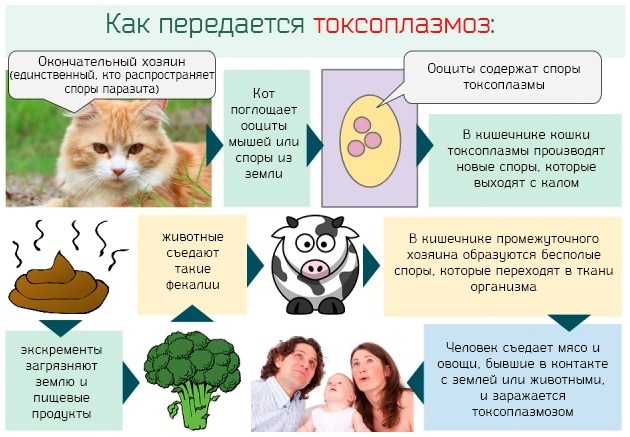
As the parasites multiply and develop, a person develops characteristic clinical symptoms, with which it is important to go to the hospital in a timely manner. The causative agents of toxoplasmosis cause numerous disorders in the patient's body, against which serious consequences arise.
Classification of toxoplasmosis
There are certain forms of the disease, given the area of localization of parasites:
| Name | Description |
| Lymponodular toxoplasmosis | A pathological condition characterized by an increase in lymph nodes up to 3.5 cm (neck, groin, occiput, armpits, mesenteric). There is no pain during palpation. Elasticity and mobility remains. The lymph nodes enlarge, but do not fuse with adjacent tissues. |
| Meningoencephalitic | The disease manifests itself as neurological disorders and vasculitis. The defeat of the vessels leads to the development of vegetative-vascular dystonia, painful sensations appear in the lower and upper extremities. There is a sharp change in mood, the child is hyperexcitable, and an inadequate reaction often appears. The reason for this condition is damage to the central nervous system. |
| Cordial | Toxoplasmosis in this situation provokes the development of pericarditis, myocarditis of a diffuse nature. The patient develops symptoms of cardiopulmonary failure. There is severe shortness of breath, tachycardia and weakness, as well as pain in the sternum. |
| Ophthalmic | Parasites infect the visual organs, against the background of which an inflammatory process appears in the region of the retina and vascular network. At an early stage of development, ocular toxoplasmosis is difficult to identify. Late symptoms disturb the child already at school age. He complains of sharp pain, fog in his eyes. Bright flashes indicate damage to the eyeball. |
| Generalized | A form of toxoplasmosis that combines all or several types of the disease. It is accompanied by characteristic clinical symptoms. |

The doctor will help to establish an accurate diagnosis and choose the most effective therapy. It is important to go to the hospital in a timely manner to prevent serious consequences, since children have weak immunity and they may not be able to cope with parasites on their own.
Diagnosis of the disease
The diagnosis and treatment of toxoplasmosis is carried out by a pediatrician or infectious disease specialist. If necessary, taking into account the area of the lesion, the child may need to consult other specialized specialists (neuropathologist, ophthalmologist, audiologist). It is important to differentiate the disease, since many other pathologies are accompanied by similar clinical manifestations (colds, flu).
Toxoplasmosis (symptoms in a child will help a specialist to determine the area of damage to parasites) allow you to diagnose the following tests:
| Name | Description |
| Immunoassay (ELISA) | A diagnostic method with which it is possible to determine not only the antibodies in the child's blood after infection, but also the period when the infection of a small organism occurred. |
| Polymerase chain reaction (PCR) | The study allows you to determine the DNA of Toxoplasma in the patient's blood. |
| Magnetic resonance imaging (MRI) | The examination will determine the location of the localization of pathological processes that have appeared against the background of parasitic infection. |
| Reaction to toxplasmin | The patient is injected under the skin of a weakened pathogen. The test result is negative if there is no reaction to the test. Swelling and redness of the skin indicates an infection of the body. |
| Computed tomography (CT) | The survey method will allow you to determine the place of localization of parasites and identify violations provoked by them. |
| X-ray | The diagnostic results will help to identify lesions and determine the area of spread of the disease against the background of parasitic infection. |
| Electrocardiogram | Diagnostic method of examination, which allows you to assess the functioning of the heart, to identify possible deviations. |
If a child is suspected of a congenital form of toxoplasmosis, a small patient is prescribed a puncture of the lymph nodes and spinal cord. A general and biochemical blood test for a parasitic lesion will show an increased level of leukocytes and protein.
Features and symptoms of toxoplasmosis in children 2-3-4-5 years old
Symptoms of toxoplasmosis in a child arise depending on the area of localization of the simplest microorganisms. In medicine, there is a certain classification, taking into account the course of pathological processes.
Each form of the disease is characterized by clinical symptoms and has its own characteristics. The child needs timely therapy, since only developing immunity can not always cope with the pathology on its own.
Congenital
The most dangerous type of disease, since parasitic infection negatively affects the development of the fetus.
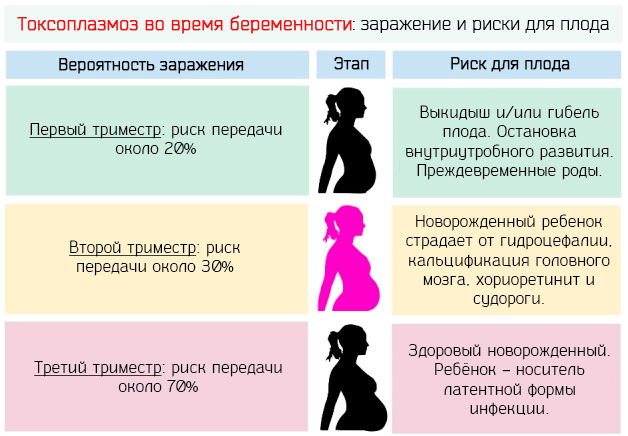
The simplest microorganisms cause the following disorders:
- internal organs and systems of the child are affected;
- vision is impaired, there is a high probability of its complete loss after birth;
- the brain is damaged.
If a child is born with an infection in the body, the following symptoms occur immediately after birth:
- enlarged lymph nodes throughout the body;
- the central nervous system is affected;
- jaundice appears;
- there are symptoms of intoxication of the body.
Subsequent pregnancies will proceed with minimal complications, since the mother's body produces antibodies to toxoplasmosis. Signs of the disease in newborns may not appear immediately, but after a while. These are neuroendocrine disorders, obesity, epilepsy. In the absence of a thorough diagnosis, the disease flows into a chronic form.
Latent
Toxoplasmosis (symptoms in a child depend on the location of the parasites) is characterized by an asymptomatic course of the disease in children. The same goes for complications.
A patient with latent toxoplasmosis is a carrier of pathogens. Pathogenic microorganisms can be in the human body for a long time and, under the influence of provoking factors, begin to multiply. In most cases, this happens as a result of a decrease in the child's immunity.
In the course of a thorough diagnosis, an infectious disease doctor can detect residual signs of the disease. There are no complications with latent toxoplasmosis.
Spicy
Pathology is acute and pronounced.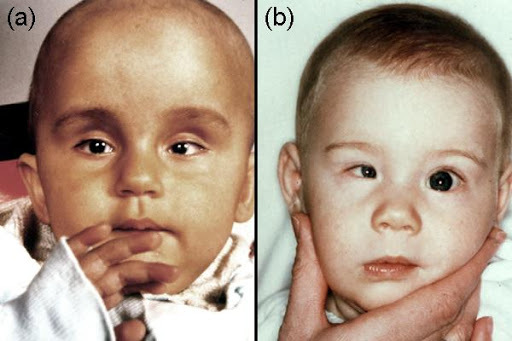
The disease is characterized by the following clinical symptoms in children:
- high body temperature;
- strong intoxication of the body with the waste products of parasites;
- the spleen, liver increases;
- fever appears;
- the central nervous system is affected;
- there is severe nausea, vomiting;
- cervical lymph nodes increase;
- the structure of the walls of blood vessels is disrupted, which leads to the appearance of hemorrhage;
- the skin, eyeballs turn yellow;
- generalized maculopapular rashes appear on the body;
- muscle weakness occurs, as a result of which the child quickly gets tired;
- the patient complains of intense headaches.
Acute toxoplasmosis in children leads to serious health problems, the functioning of the immune system is affected. Eye damage over time leads to strabismus or clouding of the lens. Against the background of a deterioration in appetite, the child loses weight.
The inner lining of the heart becomes inflamed. The pathological condition is accompanied by severe shortness of breath, fever and profuse sweating. While listening, the doctor notes a heart murmur. If the heart valves are damaged, the likelihood of developing heart failure is high.
Chronic
Toxoplasmosis (symptoms in a child will help the infectious disease doctor determine the stage and degree of development of the pathology) proceeds sluggishly, develops gradually.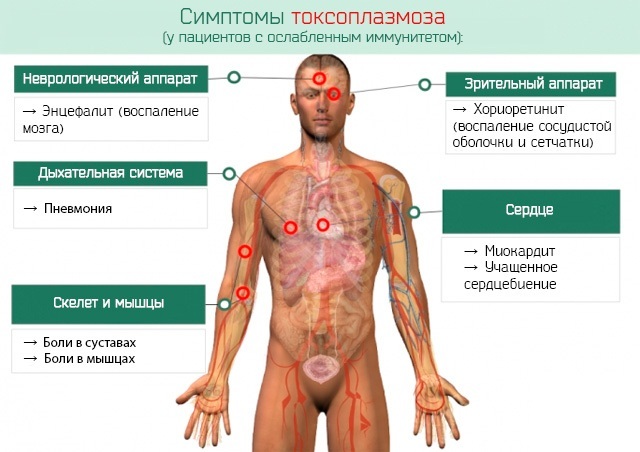

An exacerbation occurs as a result of a decrease in immunity and is accompanied by the following symptoms:
- general weakness appears in the body;
- worried about severe headaches;
- drowsiness is present;
- the child becomes irritable;
- vision is impaired;
- appetite worsens;
- gas formation increases;
- a rash occurs on the body;
- nausea appears;
- body temperature rises slightly;
- memory deteriorates.
Chronic toxoplasmosis in children causes jaundice as a result of enlarged liver and spleen. Blood pressure also decreases. The body's defenses decrease, the axillary and cervical lymph nodes increase. When feeling them, painful sensations appear. Children are more often diagnosed with the chronic form of the disease.
Complications
Correctly selected and timely therapy of toxoplasmosis in a child will prevent serious consequences.
In the absence of medical care, the patient will face serious consequences:
| Name | Description |
| Schizophrenia | A mental illness in which the child's perception and thinking is impaired. The patient has emotional and volitional disorders, deviation from the norm of behavior.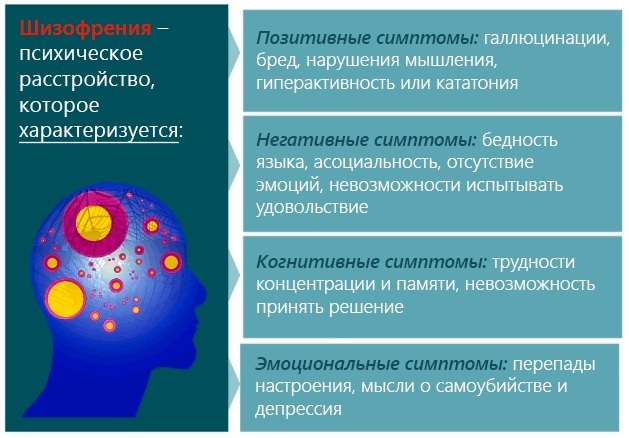
|
| Optic nerve atrophy | A pathological condition characterized by visual impairment. The disease does not respond to treatment; in most cases, patients lose their eyesight. Irreversible pathological processes contribute to the destruction of the optic nerve. |
| Epilepsy | Chronic neurological disease. The pathological condition is manifested by sudden epileptic seizures. In most cases, the disease is congenital. |
| Cerebral edema | A dangerous pathological condition that occurs as a result of a certain intracranial disease. Edema of the brain structures occurs as a result of the ingress of blood onto the tissues of the organ. A complication of the pathological condition is mental impairment, disability and even death of the patient. |
| Cerebral palsy | Cerebral palsy is a whole group of movement disorders. More often, a pathological condition is a consequence of brain damage during intrauterine development. The disease is accompanied by impaired coordination and muscle tone, involuntary movements. There are problems with hearing, vision, cognitive functions, speech defects and epileptic seizures occur. |
In some situations, it is impossible to immediately identify complications of toxoplasmosis in children. The consequences appear after a while. It can be early puberty, mental retardation, abnormal structure of the skull. Intrauterine damage to the fetus leads to incomplete development of certain internal organs.
Treatment of toxoplasmosis depending on the form
Toxoplasmosis (symptoms in a child will help the infectious disease doctor determine the location of parasites) is treated with complex methods. The specialist takes into account the accompanying symptoms and diseases that appeared against the background of parasitic infection. The drugs are selected based on the results of diagnostics, also taking into account the individual condition of the patient.
It is important to strictly adhere to the doctor's recommendations and dosages in order to reduce the manifestation of side effects.
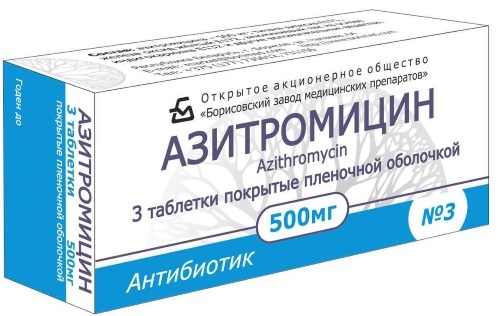
| Drug group | Name | Application |
| Antibacterial drugs | Azithromycin, Piremethamine | The medicine is taken orally before meals or after meals. For children, dosages are selected taking into account body weight. The standard volume is 10 mg / kg once a day. The course of treatment lasts 3-10 days. |
| Etiotropic drugs | Bactrim, Chloridin | The drug is prescribed to patients, given their age. The medicine should be taken in the morning and in the evening by mouth after meals. Children's dosage is 0.5-2 hours. l. 2 times a day. The duration of treatment depends on the condition of the child. |
| Antihistamines | Suprastin, Tavegil | Medicines are prescribed to patients if allergic symptoms appear. The tablets are taken orally after meals. Children's dosage depends on age and is 0.5 tablets 2-3 times a day. |
| Probiotics | Linex, Bifidumbacterin | Medicines restore damaged intestinal microflora. The probiotic is given to children in drops. Can be mixed with breast milk or warm drinks. It is recommended to give your child 6 drops once a day. The duration of treatment is 4 weeks. |
| Immunomodulators | Taktivin, Cycloferon | The medicine is administered subcutaneously. The pediatric dosage is 2-3 mcg / kg. Injections are made once a day for 5-14 days. If necessary, take a break for 2-3 weeks and continue therapy. |
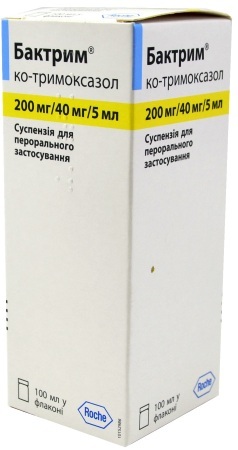
Additionally, patients with toxoplasmosis are prescribed vitamin complexes, folic acid in order to increase the defenses and support the body's immunity. The chronic form of the disease requires the use of immunomodulators for a long period.
Folk remedies
Recipes of healers and healers can only be used in a comprehensive fight against parasites that cause toxoplasmosis in children. Treatment is selected by an infectious disease doctor, it is important to adhere strictly to it and discuss all folk remedies with a specialist. The components used can provoke an allergic reaction or individual sensitivity.
Effective folk remedies for toxoplasmosis:
| Name | Recipe | Application |
| Bird cherry | The branches of the plant (100 g) are well chopped and filled with cold water (2 l). Put the resulting mass on fire, bring to a boil and continue to heat for another 15 minutes. Stand the finished broth for 3 hours and strain. | The resulting product is recommended to be consumed in 3 tbsp. l. before meals for 30 minutes. |
| Propolis | Place fresh product (100 g) in a glass container (0.5 l) and add alcohol. The medicine must be insisted for 3 days. | Propolis treatment is carried out according to a strict scheme. The medicine should be taken 3 times a day, 40 drops, pre-diluted with water (30 ml). The course of treatment lasts 7 days. Then you need to take a break for a week and continue therapy. |
| Garlic | Peel and chop 2 garlic cloves. Pour milk (1 tbsp.), Put on low heat and heat for 15 minutes. | The finished medicine should be taken 3 times a day for 14 days. |
| Herbal collection | Mix 100 g of tansy and chamomile flowers. Add to them 50 g of bitter wormwood and gentian root, also buckthorn bark 125 g. Mix all components well. Pour 1 tbsp. herbal collection with boiling water (1 tbsp.), leave overnight. In the morning strain the herbal broth and take it orally. | It is recommended to take the finished medicine on an empty stomach 2-3 times a day. |
| Tansy and watch | Mix three-leaf watch and tansy flowers 100 g each. Fill all components with hot water (500 ml). Leave for 40-60 minutes and drain. | The finished medicine must be given to the child in 1 tbsp. l. before every meal. |
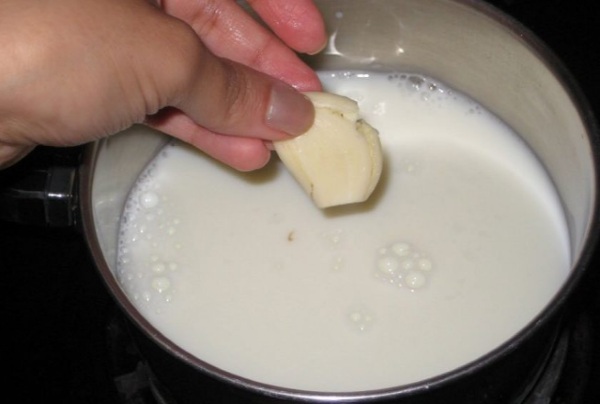
Pumpkin seeds can help fight toxoplasmosis. It is necessary to grind fresh plant seeds into powder and take it every morning for 1 tsp. l. If desired, the medicine can be taken with milk.
Parasites are most dangerous during pregnancy, especially during the third trimester. The likelihood of contracting toxoplasmosis at a later date is 70%.
Therefore, the expectant mother needs to visit a gynecologist on a compulsory basis in order to prevent infection or detect infection in a timely manner and undergo treatment. Symptoms in a child appear in 2-3 years. If this is intrauterine infection, then the disease manifests itself earlier.
Video about toxoplasmosis
Komarovsky about toxoplasmosis:



